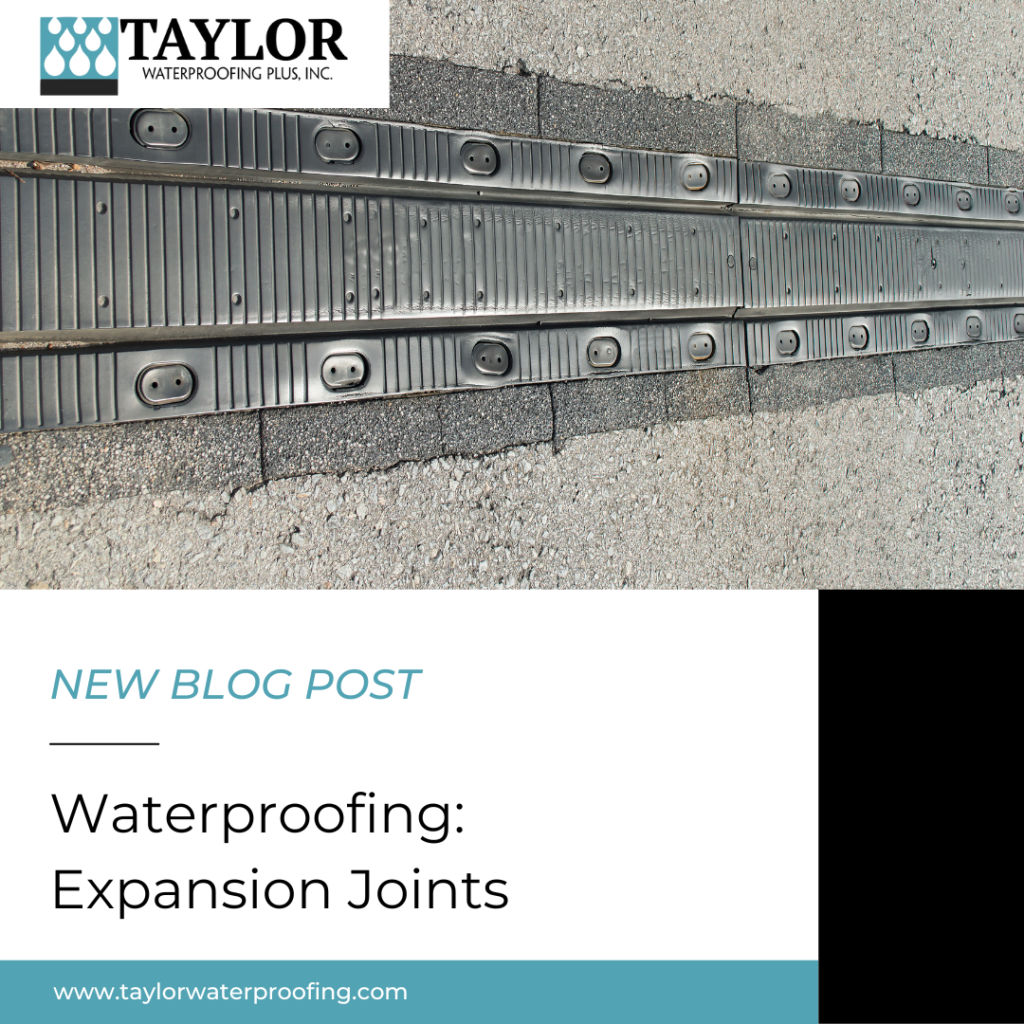When temperatures rise and fall, buildings can expand and contract. Expansion joints are built into the building’s walls, floors, and roofs. Without these joints, the concrete or bricks could break and crack over time as the building shifts. They also absorb vibration and help the building withstand stresses. It is important to make sure these joints are properly waterproofed.
Why Do You Need to Waterproof Expansion Joints?
If an expansion joint isn’t waterproofed correctly, water can infiltrate the concrete or wall, causing water damage. If water soaks into the concrete through the pores, it can corrode the steel reinforcing bars. If water gets into the building through the roof or wall expansion joints, it can cause mold and mildew growth, water stains, and weaken the structure over time.
How We Waterproof Expansion Joints
Waterproofing materials and methods will depend on the type of expansion joint being waterproofed but there are general steps to follow.
Clean the Joint – Remove any debris, dirt, or loose material from the joint. This will ensure a clean base and help the sealant stay in place.
Apply a Primer – Once the area is dry from cleaning, we apply the proper primer to the joint. This ensures proper adhesion of the waterproofing material.
Choose the Sealant – There are many options when it comes to sealants and waterproofing materials. Our team will choose the appropriate material for your specific joint. This could include silicone, polyurethane, or a specialized joint sealant.
Apply the Sealant – When applying the sealant to the joint, we make sure to fill any gaps or cracks. Our team will smooth out the sealant using a putty knife or other tool and remove any excess with solvent so that the area looks clean and professionally done.
It is very important to make sure that the expansion joints in your building are waterproofed and not vulnerable to water infiltration. This will protect your building from water damage. Our team can waterproof your building’s expansion joints and make sure there are no other areas that need addressing. Contact us through our website here to learn more about how we can help protect your building.


